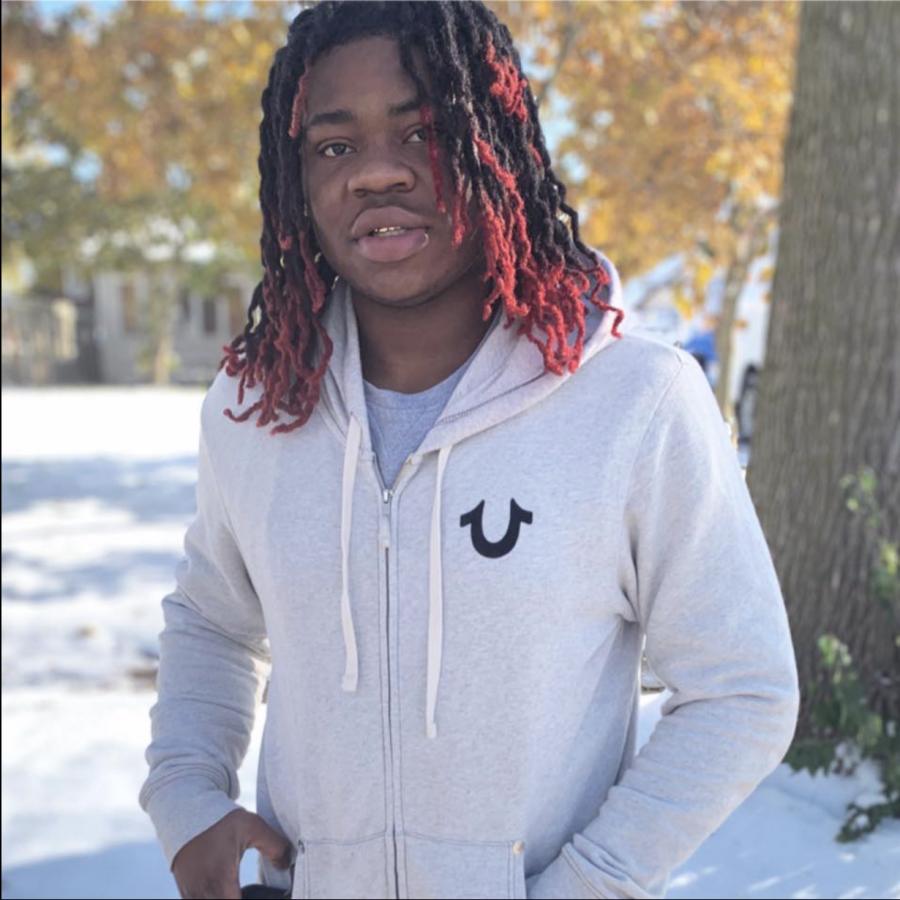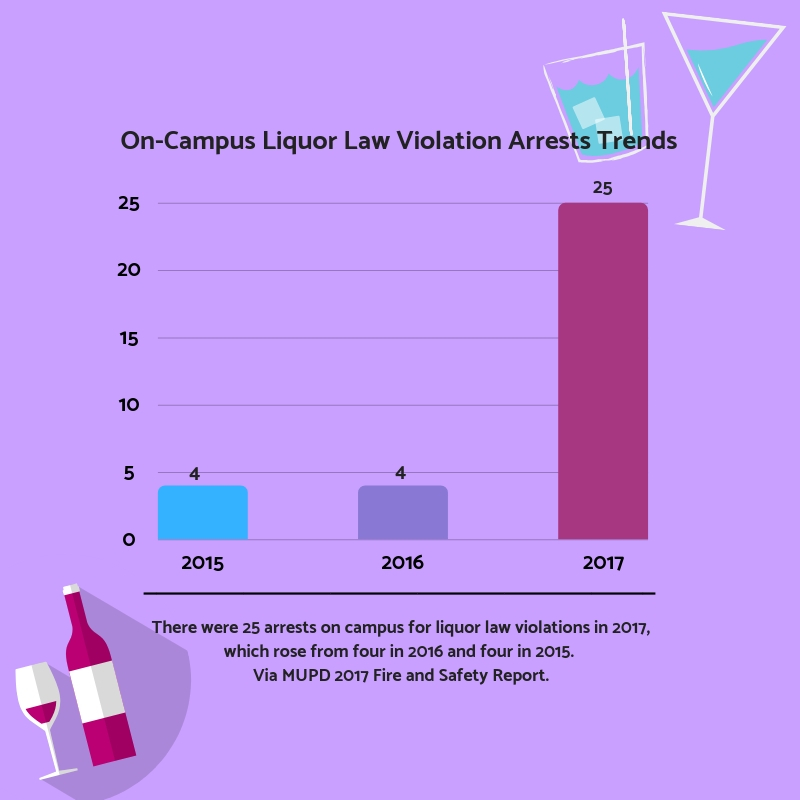Domestic violence and sexual assault, whether it be because of their portrayal in popular media or the way they’re covered in the news, may not be seen as common or daily occurrences. The misconceptions of “that will never happen to me” or that it only happens to people who fit a certain profile are there. Truth is, the statistics are far more chilling. The foundation loveisrespect reported data from a 2008 study by Antionette Daviis for the National Council on Crime and Delinquency that one in three adolescents in the U.S. fall victim to some form of abuse by a partner.
The Merriam-Webster dictionary defines abuse as “a corrupt practice or custom,” or an “improper or excessive use or treatment,” but the definition is far broader than what the dictionary suggests. Abuse comes in many forms, such as emotional, physical, sexual and now in our day and age, digital.
The Sojourner Family Peace center is Wisconsin’s largest non-profit provider of domestic violence prevention and intervention. It worked with 8,938 clients, this data doesn’t include shelter or hotline services and roughly 23 percent of these individuals were between the ages of 18-24. Four hundred and nine clients used shelter services and 19.7 percent of these clients were young adults. Their hotline received 4,222 calls and 21.7 percent were also of the 18-24 age group.
February is Teen DV Awareness month, a joint effort by Break the Cycle and loveisrespect. 2014 marks its fourth year as a full awareness month to bring attention to issues of violence among teens and young adults.
Sadly, even with abuse statistics that show so many young people directly or indirectly affected by patterns of abuse, it still carries certain stigmas and stereotypes. A study by Liz Claiborne Inc, conducted by Teen Research Unlimited, shows that “only 33 percent of teens or young adults who were in a violent relationship ever told anyone about the abuse.” This data doesn’t stray too far from the national abuse and rape data, which according to RAINN, says that cases of domestic violence are unreported more than 60 percent of the time.
Many victims of abuse, domestic or otherwise, often don’t seek help or report their abusers for a variety of reasons. One “myth” or stereotype surrounding domestic violence and abuse is what Susanah Bartlow, director of the Gender and Sexuality Resource Center at Marquette University, describes as “victim blaming or minimizing the abuse.”
“Violent and inappropriate relationships are highly normalized in our culture; think of narrative like ‘Twilight’ or the obsessive way that celebrity relationships get represented,” Bartlow says. “So, people will often minimize abusive behavior or look for reasons that the abuser is justified.”
Another myth surrounding violence is that it is always physical.
“Victims often disclose that the emotional abuse is what they find to be the most harmful, says Erin M. Perkins, Coordinator for the Milwaukee Commission on Domestic Violence and Sexual Assault.
There is also the backlash that many who denounce their abusers receive, whether it be from their own communities or on a bigger, national scale. Recent coverage of such events as the Steubenville trial or the more recent trial of Daisy Coleman’s attackers have seen their fair share of victims blaming due to rape culture. Coleman, who spoke out against her attackers in various forms of media including Seventeen magazine and the website xoJane.com, was recently hospitalized after her third suicide attempt due to the bullying and harassment that she faced from her peers and other media outlets. Blogs and Facebook pages blaming her for the horrific accounts have driven her family to move to a different state when all she did was report on the tragic events to seek justice.
Perkins also mentions that another stereotype surrounding violence and abuse is that there is “one face” of domestic violence.
“Abuse affects people, regardless of their age, sex, gender, nationality, sexual orientation, race, socioeconomic status, or religious affiliation,” she says. “Any of these identifiers has the potential to impact the way a survivor experiences abuse and accesses services.”
These stereotypes are harmful because they affect both the victims and the abusers. They place the people in the situations into categories that don’t necessarily apply when it comes to sensitive and possibly life-threatening situations.
“Racism and classism also have a huge part to play in domestic violence myths,” Bartlow says. “People stereotype that abusers are less wealthy and/or have lower educational attainment; Men of color are often categorized as someone being more violent or threatening; Women are often stereotyped as being only victims, never abusers, and mainstream media rarely discusses the elevated rates of violence among LGBT individuals. All of these are dangerous myths, but abuse can happen and does happen among all people.”
AWomansPlace.org lists some of the most common warning signs of an abusive partner, which include the need to control where his or her partner goes; who he or she is with; tries to stop him or her from talking or seeing family and friends; forces him or her into unwanted sexual situations; calls him or her derogatory names; is threatening; or hits, slaps, pushes or kicks his or her partner.
“In addition to being aware of these types of abuse and examples of each, individuals should also be aware of the cycle of violence to identify the early warning signs of an abusive and unhealthy relationship,” Perkins says. “The beginning of an abusive cycle – otherwise known as the ‘tension building phase’ of the cycle of violence – usually entails an abuser engaging in verbal and psychological abuse. Victims may experience stress-related illnesses, anxiety, depression, changes in appetite, fatigue, and changes in sleep patterns in reaction to the tension in their relationship. they may start to accept blame for the behavior to avoid the abuse, deny that the abuse is occurring or escalating, or deny their own feelings, such as fear or anger.”
So what can you do if you find yourself in an abusive relationship, know of somebody that is getting abused or simply just want to get informed about the issue? On campus, students can look for information and counseling through the Counseling Center, the Marquette University Medial Clinic or they can educate themselves through the Gender and Sexuality Resource Center.
Most of Marquette’s educational efforts are focused on “helping people identify health sexual communication and addressing sexual misconduct,” Bartlow says. The Gender and Sexuality Resource Center also provides educational resources on stalking, dating violence and domestic violence.
The City of Milwaukee also has its longstanding Commission on Domestic Violence and Sexual Assault. This multidisciplinary team is “charged with the responsibility to increase safety for victims of domestic violence and sexual assault while holding perpetrators accountable for their behavior,” Perkins says.
Violence in our society threatens not only the victims, but all of is. It’s important to dispel the myths and raise awareness in order to break the vicious cycles.
“It’s important to understand domestic and dating violence as part of a spectrum of gender-based violence that uses power to intimidate and control people,” Bartlow says. “It’s a social disease and health epidemic, as much as an individual problem. So all of us have a part to play in educating ourselves and one-another about the issues and coming together to address it in an ongoing way.”






